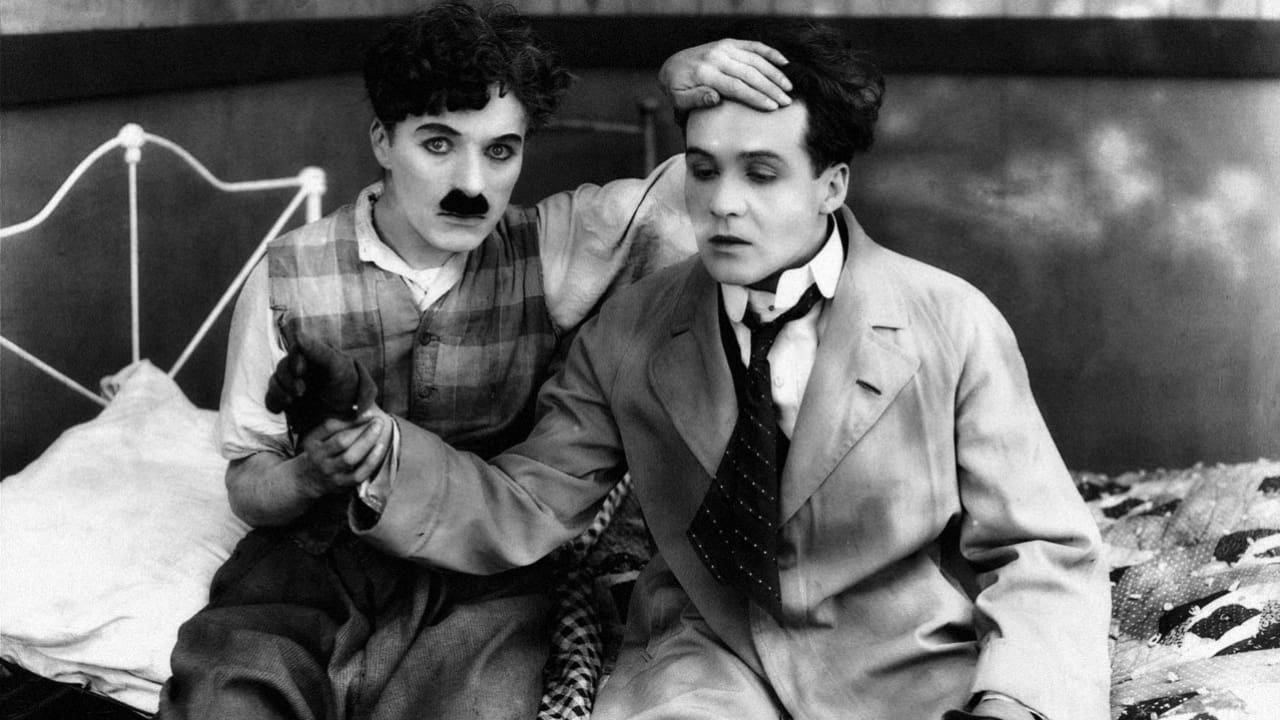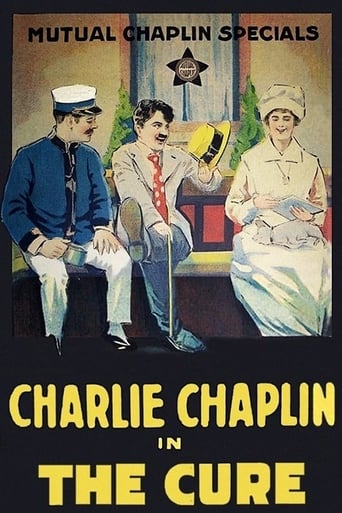

The Cure (1917) was another one of Charlie Chaplin's shorts that featured a few members of his troupe. Charlie stars as a drunk who goes to a health spa. His day their is filled with all kind of crazy situations. The funniest one involves a burly masseuse who manhandles his clients. After witnessing the masseuse's style of massage, Charlie is a little more than reluctant to participate and the burly dude chases him all over the room very eager to give our hero a "treatment". Edna Purviance co-stars as well.An interesting look at Chaplin as he assumes more control over his films. A few more of these shorts would lead him to direct, produce, write and star in his first feature length film.Highly recommended
... View MoreChaplin heads to a spa, which was all the rage back in the day, in the tenth film he edited, wrote, produced, and directed for the Mutual Film Corporation. Although perceptions of alcoholism have changed significantly since Chaplin's time, the rising tide of the temperance movement was influential in passing the eighteenth amendment a couple years after this film was released. Alcoholism was perceived as more a battle of will power than environment or genetics. In The Cure, Chaplin descends on a health spa catering to the hoity-toity and creates chaos as usual. Instead of the tramp, we get Chaplin playing a regular character this time. Chaplin's character, like probably many real life people who went to these spas, has no intention of actually drying out. There are many moments of slapstick, sight gags, and poking fun at the high and mighty. Eric Campbell is on hand as a rich masher with gout. Edna Purviance plays the girl Chaplin helps of course. Henry Bergman plays the bathhouse masseuse as, what Chaplin's character perceives to be, a wrestler. This sequence builds laughs upon laughs and is uproarious, as Chaplin attempts to extricate himself from what he fears to be a very intimidating situation. Revolving doors also play a role in some terrific sight gags. Like many Chaplin films, the film starts slow and picks up as it goes along, an enjoyable departure from the tramp. *** of 4 stars.
... View MoreMeasured in terms of sheer belly-laughs The Cure may well be the funniest movie Charlie Chaplin ever made. Not one moment is given over to sentimentality about childhood trauma, unrequited love, poverty or anything of the sort; this time around, Chaplin is single-minded in his drive to make us laugh, and he achieves his goal with ruthless and exhilarating efficiency.The story's setting may require a bit of explanation for younger viewers. At the time this film was made there were a number of well-known health resorts in the U.S. and Europe built around mineral springs. It was fashionable for middle- and upper-class people to spend a week or two at these spas to address whatever health problems they might be struggling with, for it was believed that mineral water cured or at least alleviated a variety of ailments. The resorts were visited by well-to-do patients afflicted with everything from rheumatism, gout, or polio to chronic alcoholism, and someone in the latter category who went to a spa to get clean and sober was said to be "taking the cure."When Charlie arrives at the spa that is our setting, pushed in a wheeled deck-chair by a uniformed attendant and obviously still tipsy, we know right away that despite the familiar mustache he's not the Little Tramp we usually encounter. Here, though slightly disheveled, Charlie sports a dapper ensemble of light jacket, straw boater, and spotted tie, indicating that he's a respectable bourgeois citizen who has come to this place -- probably at the insistence of family or friends -- to dry out. It's soon apparent that he has no intention of changing his ways, however, for his wardrobe trunk is full of booze and he wastes no time in refreshing himself. When an attendant tries to ply him with mineral water he reacts with disgust, and after taking a sip rushes back to his room to wash the taste out of his mouth with liquor. Just to demonstrate that he's not entirely a wastrel, however, Charlie gallantly rescues a young lady (Edna Puviance) from the unwelcome attentions of an obnoxious man (Eric Campbell), and even sobers up long enough to go for a massage and a very brief dip in the spa's pool. Eventually, Charlie's stash of liquor is discovered by the resort's manager and inadvertently dumped into the spring. Soon, everyone in the place except for Charlie and Edna is drunk and disorderly, and Charlie must once again come to Edna's aid.The great sequences in this comedy begin almost immediately, when Charlie confronts a revolving door and has his first run-in with Eric Campbell, whose unpleasant personality determines that his gouty foot will be fair game for brutality thereafter. Campbell, who wears an especially nasty-looking beard, has a great moment when he appears behind Edna in the lobby, leering at her through a curtain like a crazed goblin. Things get a little risqué when Charlie misinterprets Eric's flirty gestures as meant for himself, but the real comic highpoint comes when Charlie heads for the pool and must fend off a beefy masseur (Henry Bergman). This sequence is absolutely hilarious no matter how many times you see it, and stands with the best work of Chaplin's career.Perhaps the synopsis of The Cure will sound distasteful to anyone who hasn't seen the film; and granted, attitudes towards substance abuse have changed over time. I maintain that Chaplin was well aware of the seriousness of his subject matter -- his own father died young as a result of alcoholism -- and that he did not take it lightly. The true subject of this film was the contemporary fashion for health resorts, and much of the humor derives from poking fun at the proponents of the spring's curative powers. We see just enough of the spa's administrative staff to get a sense of their self-righteousness, a well-meaning but pompous attitude suggesting that they know all the answers and hold the key to health and happiness. Charlie with his trunk-full of booze is a dangerously subversive element in this atmosphere, and it's his (almost accidental) overthrow of authority that's funny and exhilarating.The Cure is beautifully staged, expertly performed, and hilarious. Where health and happiness are concerned I'd say that viewing it is as restorative as the spring waters touted by the resort's staff in the film: it's good and good for you.
... View MoreThis is one of the more dated of Chaplin's short comedies, but it still has some funny parts. A great deal of the humor comes from elements that either do not seem quite as funny today (habitual drunkenness) or that are not as familiar today (gout, "taking the cure"), but there are other parts that demonstrate Chaplin's usual comic genius. Charlie is a rich idler who is at a spa to "take the cure", but he is most reluctant to give up his dissolute ways. The best moments are probably the scenes with a wobbly Charlie and a gouty Eric Campbell trying to negotiate a revolving door - they get a lot of laughs out of a simple gag.While dated, there are still enough very funny parts to make "The Cure" worth a look.
... View More